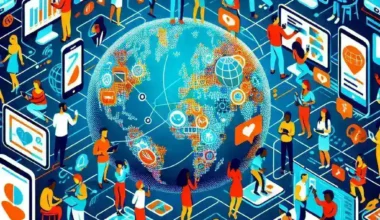Introduction
In today’s data-driven world, businesses and individuals alike are inundated with vast amounts of information. This overwhelming influx can pose significant challenges when it comes to interpreting and visualizing data effectively. However, with the advent of advanced technologies like artificial intelligence (AI), tools such as Tableau are transforming how we interact with data. One of the most groundbreaking features is the ability of Tableau AI to generate auto dashboards from plain text, simplifying the process of data visualization and enabling users to make informed decisions swiftly.
The Evolution of Data Visualization
Data visualization has come a long way since the early days of static charts and graphs. As organizations began to recognize the importance of data in driving strategic decisions, the demand for more sophisticated visualization tools grew. Tableau emerged at the forefront of this evolution, providing a user-friendly interface that allows non-technical users to create compelling visual representations of their data.
Historical Context
The concept of data visualization can be traced back centuries, with early examples including William Playfair’s line graphs in the 18th century. However, the digital age brought about a significant shift. The late 20th century saw the advent of desktop computing, which paved the way for tools like Microsoft Excel to gain popularity. Yet, as data volumes exploded in the 21st century, the limitations of traditional spreadsheet software became apparent.
Tableau’s Rise
Founded in 2003, Tableau became a game-changer in the analytics space. It enabled users to connect to various data sources and create interactive dashboards without requiring extensive programming knowledge. Over the years, Tableau has continually evolved, integrating AI and machine learning capabilities to enhance its functionality.
The Role of AI in Tableau
Artificial intelligence plays a crucial role in modern data visualization, particularly in automating tedious tasks and enhancing user experience. Tableau’s integration of AI features allows users to extract insights from their data more efficiently.
How Tableau AI Works
Tableau AI leverages natural language processing (NLP) to interpret user queries expressed in plain text. This feature enables users to ask questions about their data in a conversational manner, eliminating the need for complex coding or technical jargon. For instance, a user could simply type, “Show me the sales trends for the last quarter,” and Tableau AI would automatically generate a dashboard that visualizes the requested information.
Benefits of Auto Dashboards
The ability for Tableau AI to generate auto dashboards from plain text offers numerous advantages:
- Accessibility: Users of all skill levels can easily access and interpret data without needing specialized training.
- Time Efficiency: Automating the dashboard creation process saves time, allowing users to focus on analysis rather than manual tasks.
- Enhanced Decision-Making: With real-time access to visual insights, users can make quicker and more informed decisions.
- Improved Collaboration: Teams can share and discuss dashboards generated based on common queries, fostering better collaboration.
Real-World Applications
To illustrate the impact of Tableau AI’s auto dashboards, consider a retail company analyzing its sales performance. By leveraging plain text queries, sales managers can generate dashboards that display metrics like regional sales trends, product performance, or customer demographics. This capability enables them to quickly identify growth opportunities and areas needing improvement.
Case Study: Retail Success Story
A leading retail chain utilized Tableau AI to streamline their sales reporting process. Previously, the team spent hours collating data from multiple sources and creating presentations for stakeholders. With Tableau AI, they could now enter requests in plain text, generating instant dashboards that highlighted key performance indicators. This transformation not only saved time but also improved clarity in their presentations, leading to more effective decision-making.
Future Predictions for Tableau AI
As technology continues to advance, the future of Tableau AI looks promising. Here are some predictions for how auto dashboards may evolve:
- Increased Personalization: Future iterations of Tableau AI will likely provide even more tailored dashboards based on user preferences and behavior.
- Integration with IoT: As the Internet of Things (IoT) expands, Tableau may incorporate real-time data from connected devices into its auto dashboards.
- Greater Predictive Analytics: Enhanced AI capabilities could enable Tableau to not only visualize past data but also forecast future trends with greater accuracy.
Challenges and Considerations
While the benefits of Tableau AI’s auto dashboards are substantial, it is essential to consider potential challenges:
- Data Quality: The effectiveness of auto-generated dashboards relies heavily on the quality of the underlying data. Incomplete or inaccurate data can lead to misleading insights.
- User Dependency: Over-reliance on automated dashboards may result in users neglecting their analytical skills, making them less equipped to interpret data critically.
- Security Concerns: As more users access sensitive data through AI-generated dashboards, ensuring data security and privacy becomes paramount.
Conclusion
Tableau AI’s capability to generate auto dashboards from plain text represents a significant advancement in the realm of data visualization. By making data more accessible and user-friendly, Tableau empowers individuals and organizations to harness their data’s full potential. As technology continues to evolve, the future of data visualization is undoubtedly bright, with endless possibilities for enhanced decision-making and analytical capabilities.
Call to Action
Are you ready to transform your data visualization experience? Explore how Tableau can help you harness the power of AI to create insightful dashboards effortlessly. Embrace the future of data analysis!






